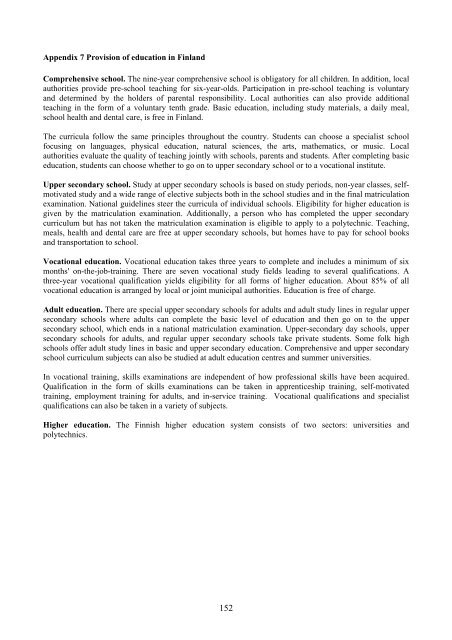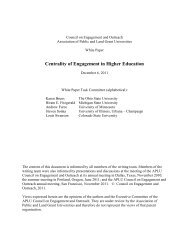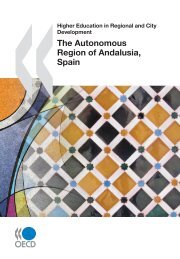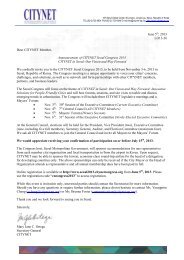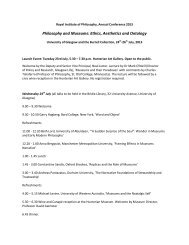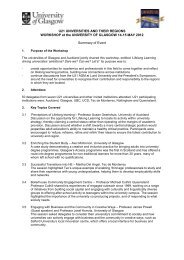Finland - Jyvaskyla Region - Final Self-Evaluation Report.pdf
Finland - Jyvaskyla Region - Final Self-Evaluation Report.pdf
Finland - Jyvaskyla Region - Final Self-Evaluation Report.pdf
Create successful ePaper yourself
Turn your PDF publications into a flip-book with our unique Google optimized e-Paper software.
Appendix 7 Provision of education in <strong>Finland</strong>Comprehensive school. The nine-year comprehensive school is obligatory for all children. In addition, localauthorities provide pre-school teaching for six-year-olds. Participation in pre-school teaching is voluntaryand determined by the holders of parental responsibility. Local authorities can also provide additionalteaching in the form of a voluntary tenth grade. Basic education, including study materials, a daily meal,school health and dental care, is free in <strong>Finland</strong>.The curricula follow the same principles throughout the country. Students can choose a specialist schoolfocusing on languages, physical education, natural sciences, the arts, mathematics, or music. Localauthorities evaluate the quality of teaching jointly with schools, parents and students. After completing basiceducation, students can choose whether to go on to upper secondary school or to a vocational institute.Upper secondary school. Study at upper secondary schools is based on study periods, non-year classes, selfmotivatedstudy and a wide range of elective subjects both in the school studies and in the final matriculationexamination. National guidelines steer the curricula of individual schools. Eligibility for higher education isgiven by the matriculation examination. Additionally, a person who has completed the upper secondarycurriculum but has not taken the matriculation examination is eligible to apply to a polytechnic. Teaching,meals, health and dental care are free at upper secondary schools, but homes have to pay for school booksand transportation to school.Vocational education. Vocational education takes three years to complete and includes a minimum of sixmonths' on-the-job-training. There are seven vocational study fields leading to several qualifications. Athree-year vocational qualification yields eligibility for all forms of higher education. About 85% of allvocational education is arranged by local or joint municipal authorities. Education is free of charge.Adult education. There are special upper secondary schools for adults and adult study lines in regular uppersecondary schools where adults can complete the basic level of education and then go on to the uppersecondary school, which ends in a national matriculation examination. Upper-secondary day schools, uppersecondary schools for adults, and regular upper secondary schools take private students. Some folk highschools offer adult study lines in basic and upper secondary education. Comprehensive and upper secondaryschool curriculum subjects can also be studied at adult education centres and summer universities.In vocational training, skills examinations are independent of how professional skills have been acquired.Qualification in the form of skills examinations can be taken in apprenticeship training, self-motivatedtraining, employment training for adults, and in-service training. Vocational qualifications and specialistqualifications can also be taken in a variety of subjects.Higher education. The Finnish higher education system consists of two sectors: universities andpolytechnics.152


